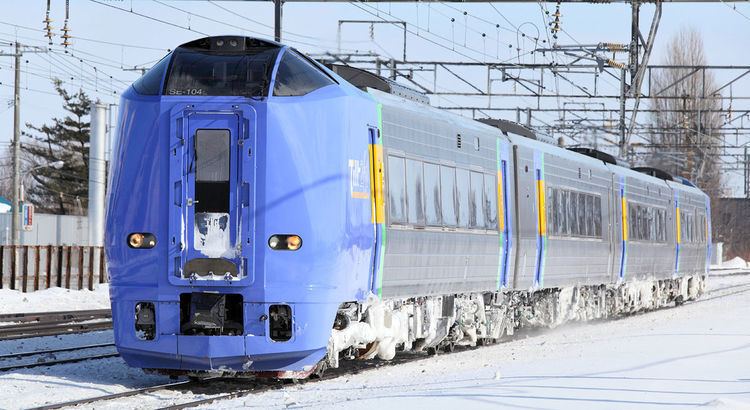In service 2000–Present Number under construction 28 vehicles Number in service 35 vehicles | Constructed 1998– Number built 35 vehicles | |
 | ||
Manufacturer Fuji Heavy Industries, JR Hokkaido | ||
The KiHa 261 series (キハ261系) is a tilting diesel multiple unit (DMU) train type operated by Hokkaido Railway Company (JR Hokkaido) on limited express services in Hokkaido, Japan, since 2000.
Contents
Design
The running gear was based on the KiHa 201 series trains introduced in 1997, and the body design was a joint venture with the Danish State Railways (DSB).
Fleet
As of 1 April 2013, 35 KiHa 261 series vehicles were in operation. 14 were built by Fuji Heavy Industries, and 21 were built by JR Hokkaido. A further 28 vehicles are on order to be delivered from fiscal 2015.
Operations
KiHa 261 series trainsets are used on the following services.
Super Sōya
Super Sōya services are normally formed of four-car KiHa 261-100 series sets, and are sometimes lengthened to six cars during busy periods.
4-car formations
Four-car sets are formed as follows.
6-car formations
Six-car sets are formed by adding two cars as shown below. Car 1 (and car 21) includes Green (first) class and standard class accommodation.
Super Tokachi
Super Tokachi services were originally formed of five-car KiHa 261-1000 series sets, but these were later reduced to four cars.
The 4-car Super Tokachi sets are formed as follows.
History
A four-car pre-production set was delivered from Fuji Heavy Industries in November 1998 for evaluation and testing. The first production trains were introduced on Super Sōya services between Sapporo and Wakkanai from the start of the revised timetable on 11 March 2000.
New KiHa 261-1000 series 5-car sets were introduced on Super Tokachi services between Sapporo and Obihiro from October 2007.
Future plans
A further 28 KiHa 261 series vehicles are scheduled to be delivered from fiscal 2015 onward, and these are not expected to be equipped with tilting capability.
From December 2015 until the end of fiscal 2017, the KiHa 261-1000 series fleet will gradually be repainted into a new livery with white front ends, yellow front-end gangway doors, and a purple bodyside stripe.
